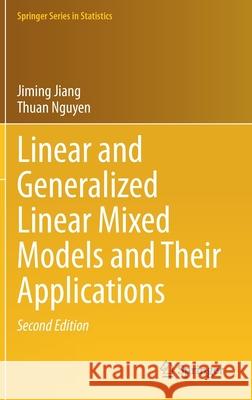Linear and Generalized Linear Mixed Models and Their Applications » książka
topmenu
Linear and Generalized Linear Mixed Models and Their Applications
ISBN-13: 9781071612811 / Angielski / Twarda / 2021 / 343 str.
Linear and Generalized Linear Mixed Models and Their Applications
ISBN-13: 9781071612811 / Angielski / Twarda / 2021 / 343 str.
cena 484,18
(netto: 461,12 VAT: 5%)
Najniższa cena z 30 dni: 462,63
(netto: 461,12 VAT: 5%)
Najniższa cena z 30 dni: 462,63
Termin realizacji zamówienia:
ok. 22 dni roboczych
Dostawa w 2026 r.
ok. 22 dni roboczych
Dostawa w 2026 r.
Darmowa dostawa!
Kategorie BISAC:
Wydawca:
Springer
Seria wydawnicza:
Język:
Angielski
ISBN-13:
9781071612811
Rok wydania:
2021
Wydanie:
2021
Numer serii:
000904298
Ilość stron:
343
Waga:
0.68 kg
Wymiary:
23.39 x 15.6 x 2.06
Oprawa:
Twarda
Wolumenów:
01
Dodatkowe informacje:
Wydanie ilustrowane











